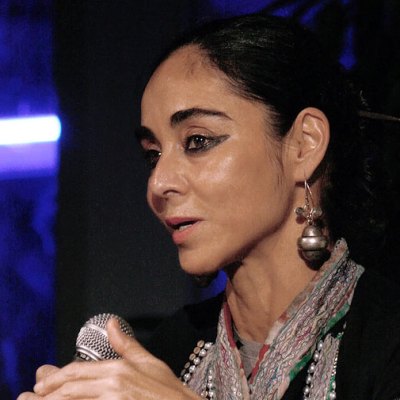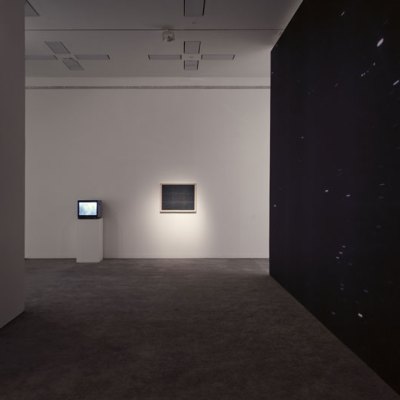‘Film begins with D.W. Griffith and ends with Kiarostami.’ These were the infamous words of the great iconoclast Jean-Luc Godard, raising a then comparatively obscure director from Iran onto the terminal plinth in the history of cinema. It would be more appropriate, as Godard has perhaps since realised, and Kiarostami almost certainly did at the time, not to see cinema, or any art form, in terms of its exhaustion. Like Godard or Stravinsky or Miles Davis, Kiarostami’s life in film progressed through many different idioms. He survived Iran’s transition from monarchy to Islamic Republic by making towering masterpieces which he did without seeking to transcend his times or succumbing to either a censorious revolutionary government or the dubious seductions of international recognition.
From his early short documentaries and educational films through the masterpieces of the ’80s and ’90s to his subsequent excursions in digital video and non-narrative film, Kiarostami pursued an utterly singular and joyous trajectory that was fitting for someone so fascinated by roads, tracks and paths. In his 2005 autobiographical essay, Roads of Kiarostami, a marvellous and affecting assemblage of photographic stills and film, Kiarostami traces the fascination that charges his photographs to his childhood, declaring that ‘they are images of the human search that has never been recorded, images from the search for life. They can be sentimental or the search for a scrap of bread.’
Iranians have felt his death deeply. His best films balanced their director’s urbanity with a dedicated and open love for the vernacular culture of marginal places; but Kiarostami was far more than a national icon or an ambassador for a frequently embattled artistic community. He was the greatest living exemplar of the distinctive symbiotic relationship that poets, painters, photographers and filmmakers have always enjoyed in Iran. The signal film in Iranian cinema, for example, The House is Black, was directed by the poet Forugh Farrokhzad.
Kiarostami was always searching for the limits of the picture. Unlike most metanarratives, his films never posed familiar arguments about the reliability or otherwise of his medium. On the contrary, his films were saturated with irrefutable sensual detail. But implicit to this was a sense of what happened beyond the camera or after the shooting had stopped. Through the Olive Trees, the final instalment of his Rostamabad trilogy, concludes with the culmination of the awkward, stunted courtship that we and Kiarostami’s fictional surrogate have observed between two extras on what is meant to be the preceding film, Life and Nothing More. The couple we have come to know dwindle to white motes against a green landscape; the answer we have been expecting or half-dreading is forever lost to us. This elusiveness could be frustrating but it isn’t. Why should our expectations, which narrative is conventionally tricked out to satisfy, always be met? Don’t we have anything more to learn from people or about the culture and landscape to which they belong?
Kiarostami asked these questions with compassion and consummate formal invention. The entire Rostamabad trilogy is composed out of moments that might strike us as incidental but only if we’ve persuaded ourselves to forget the drama of seasonal ritual or of being at school, never mind the trilogy’s almost unimaginable but very real context of the regional devastation wrought by the Rudbar earthquake of 1990. In a documentary like Homework or the fictional Taste of Cherry, Kiarostami inserted himself into the frame, usually hard at work at the business of directing. This wasn’t simply a trick. Kiarostami’s work sprang from a powerful ethical impulse but he just as often violated any resulting feelings of propriety. One almost feels he had to.
Kiarostami was not above shocking us or making us squirm. The increasing distress of the small boy at the end of Homework as Kiarostami asks him if he is afraid of his strange adult interlocutor is exceedingly uncomfortable to watch. But in Ten, when the heartbroken young passenger unwinds her veil to reveal that she has shaved her head, expressing her pain and dodging the Islamic Republic’s prohibition against women displaying hair in the same radical gesture, our discomfort at her courage invites an uncommonly liberating engagement with what we see. By so viscerally apprehending the risk the character and actress takes, we understand what compound of reason and feeling motivated her.
Essential to the credibility of the films and, I think, to Kiarostami’s moral consistency was some acknowledgement of the director’s physical presence preceding our field of vision. We are observing life and watching a film at the same time and this confers on us a welcome responsibility. Kiarostami once recounted being asked by Kurosawa how he’d developed his virtuosic facility for directing children. ‘My own thought,’ Kiarostami explained, ‘is that one is very grand, like an emperor on a horse, and it’s very hard for a child to relate to that. In order to be able to cooperate with a child, you have to come down to below their level in order to communicate with them. Actors are also like children.’
Could the same be said of his global audience? It can hardly be the worst thing to say of an artist that he confronts his audience with proofs of their indelible innocence, but notice the hint of abnegation in that word ‘below’. Ultimately, Kiarostami’s films conspire in a great, quiet and bloodless dethroning of artistic authority. The emperor is no longer on his horse. We are the children who may now learn how to see.


